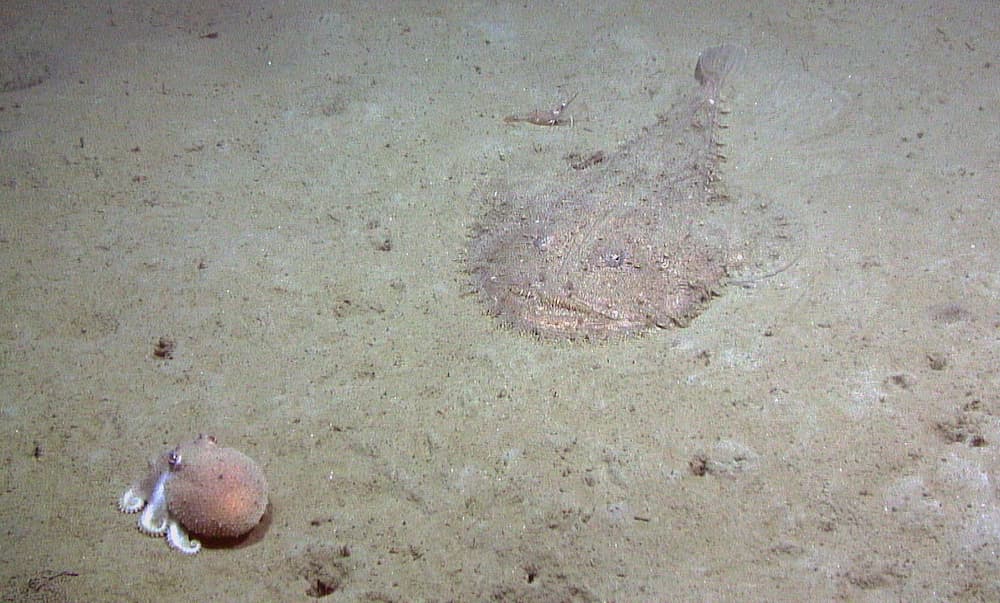Living Resources

The Stellwagen Bank region is one of the most biologically diverse in the Gulf of Maine, with almost 600 documented species residing here as migratory visitors or permanent residents. Among its residents and occasional visitors are 22 different marine mammals, 54 species of seabirds, four sea turtles, dozens of fishes, and hundreds of invertebrates. Researchers are only beginning to identify the multitude of microscopic species in these waters. A partial list of species is available here.
The abundance of marine life in waters around Stellwagen Bank was recognized by Indigenous Peoples and the earliest European explorers and colonists. For more background on historic baselines and early human use, visit our Heritage pages.
The marine food web in the sanctuary (and ocean in general) presents a complicated mix of interrelated food chains. Predator-prey relationships are often based on mouth size. However, the death of a large species often serves as food to much smaller scavengers. Note that the zooplankton category includes larval species that, when fully grown, often function at a different trophic level. For example, a larval goosefish is a form of zooplankton preyed upon by many, but as an adult is a predator, targeting numerous species, from other piscivorous fish to seabirds.
We offer a gallery of invertebrate images here and invite you to view our other marine species galleries in other sections of this website
To view images of marine mammals, sea turtles and other species that may be seen during a whale watch, visit our whale watching pages.
To view sea birds, go to our bird watching section.
To view fishes that are important for commercial and recreational fishing, as well as other less well-known species, visit our fishing section.
To view images of invertebrates and some of our favorite photos, go to the multimedia section.
NOAA's Northeast Fisheries Science Center provides a review of species on the Northeast U.S. Continental Shelf (where the sanctuary is located). The site provides information about species ranging from phytoplankton to whales.
Support responsible wildlife viewing / Wildlife Viewing Guidelines: Recreate Responsibly | Office of National Marine Sanctuaries

